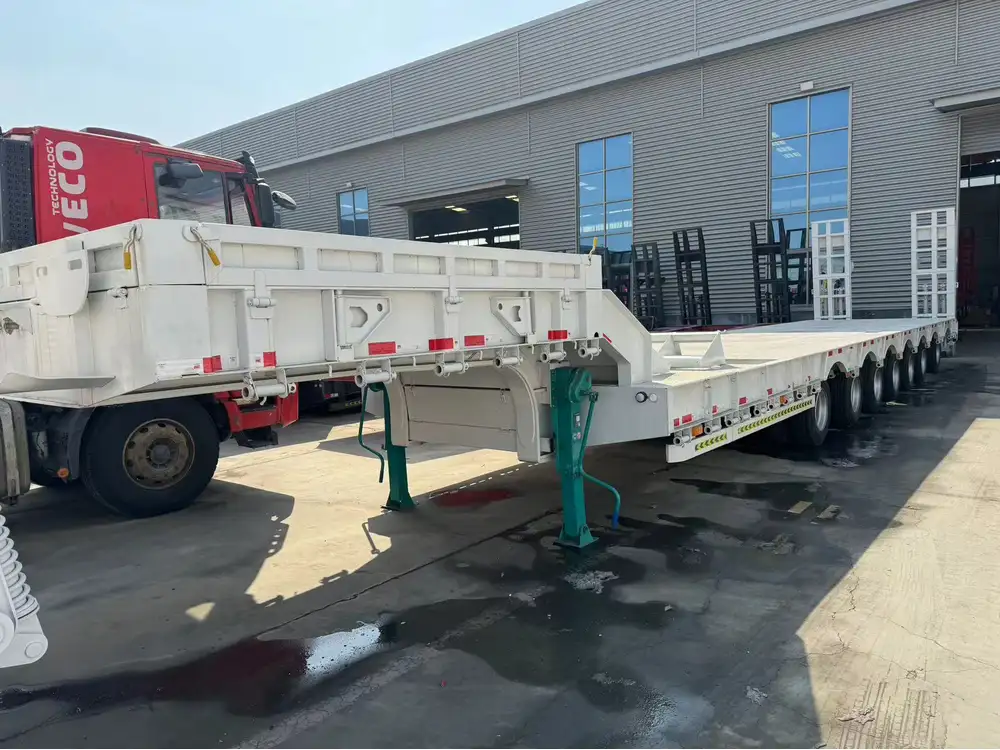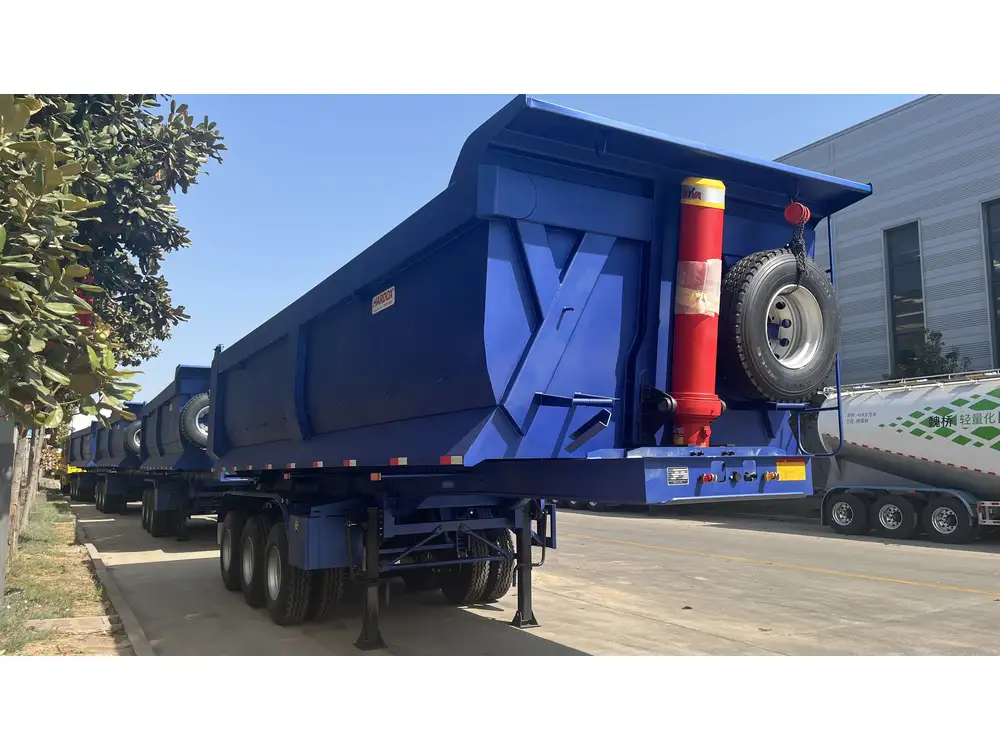When it comes to the operations of semi-trucks and trailers, understanding the intricate systems and components is essential for both safety and efficiency. One critical component that often raises questions is the air tank. Knowing where the air tank is located in a trailer can significantly enhance your comprehension of its functionality and maintenance needs. This guide delves into the various aspects that surround the air tank’s placement, its purpose, and related systems in the trailer.
Overview of Air Systems in Trailers
Before pinpointing the precise location of the air tank in a trailer, it is crucial to understand the role that air systems play within the larger operation of semi-trailer trucks. The air system in trailers is predominantly responsible for:
- Brake Operation: The air tank stores compressed air that is essential for pneumatic braking systems.
- Suspension Control: Many trailers use air suspension systems for improved ride quality and load leveling.
- Cargo Handling: In some cases, air-powered systems assist in loading and unloading cargo.
Understanding these functions will enhance your ability to troubleshoot issues should they arise.
Components of the Air System
To truly grasp where the air tank is located, one must recognize the components interlinked with it:
| Component | Function |
|---|---|
| Air Tank | Stores compressed air for brakes and suspension. |
| Governor | Regulates the air pressure within the system. |
| Compressor | Pumps air into the air tank, usually powered by the engine. |
| E-Brake Valve | Controls the emergency braking system. |
| Air Lines | Distribute air from the tank to various components. |

Typical Locations of the Air Tank in Trailers
Air tanks can be strategically located based on the trailer’s configuration and make. The most common locations include:
1. Underneath the Trailer
One frequently employed placement for the air tank is underneath the trailer frame. This position offers several advantages:
- Space Saving: Placing the tank beneath frees up vital cargo space inside the trailer.
- Protection: The tank is shielded from direct exposure to cargo and elements, although it remains susceptible to road debris.
Pros and Cons of Underneath Placement
| Pros | Cons |
|---|---|
| Space-efficient design | Vulnerable to damage from debris |
| Better aerodynamics | Difficult accessibility for maintenance |

2. On the Trailer Frame
In some trailer designs, especially those built for heavy-duty applications, the air tank is mounted directly on the trailer frame. This location allows for:
- Ease of Access: Maintenance tasks like visual inspections and repairs are simplified.
- Strategic Weight Distribution: Placement on the frame can optimize the trailer’s center of gravity.
Pros and Cons of Frame-Mounted Placement
| Pros | Cons |
|---|---|
| Accessible for maintenance | May consume more vertical space |
| Optimized for heavy loads | Can alter trailer dynamics if not balanced |
3. Near the Axles
Some trailers have air tanks mounted close to the axles, particularly in air-ride systems. This configuration is beneficial because:
- Reduced Pressure Loss: Shorter air lines minimize friction and potential air loss, improving overall efficiency.
- Compact Setup: This space-efficient arrangement is ideal for trailers with limited room.

Pros and Cons of Axle-Proximal Placement
| Pros | Cons |
|---|---|
| Efficient air distribution | Limited accessibility for maintenance |
| Reduced risk of pressure loss | High exposure to potential road impacts |
Air Tank Maintenance: Essential Practices
The correct location of the air tank is paramount, but it is equally important to engage in regular maintenance practices. Insights into necessary care can significantly extend the lifespan of your air systems and prevent failures.
Regular Inspection
- Visual Checks: Look for any signs of corrosion, rust, or damage.
- Air Leaks: Periodically check all connections and fittings for signs of escaping air.

Draining the Tank
Daily or weekly, depending on usage, draining the air tank is critical to remove accumulated moisture. Moisture can lead to rust internally, adversely affecting braking and suspension systems.
Pressure Testing
Conduct pressure tests regularly to ensure that the tank maintains adequate pressure levels and functions correctly with the system’s compressor and regulator.
Understanding Air Tank Failure Signs
Identifying the signs of air tank failure promptly can prevent catastrophic accidents. Here are symptoms to watch:
- Unusual Noises: Hissing sounds when braking or suspending could indicate leaks.
- Sluggish Braking Response: A delay suggests that air pressure might be compromised.
- Moisture Accumulation: Persistent moisture in the output lines can signal tank corrosion.

Table of Common Failures and Remedies
| Failure Sign | Potential Cause | Remedy |
|---|---|---|
| Hissing noises when braking | Leaks from the tank | Inspect the tank and air lines for damage. |
| Unresponsive brakes | Insufficient air pressure | Check compressor functionality. |
| Continuous moisture buildup | Lack of drainage | Implement regular draining schedule. |
The Importance of Air Dryers and Filters
In the context of air tanks, the functionality of air dryers and filters cannot be overstated. These components work hand-in-hand with air tanks:
- Air Dryers: Remove moisture and particulates from the air before it enters the tank, ensuring clean air storage.
- Filters: More effectively protect the air tank and connected components by preventing contaminants from causing corrosion or blockages.
Conclusion
Understanding where the air tank is located in a trailer is crucial for anyone involved in the trucking industry, from operators to mechanics. With various potential locations, each with their own benefits and drawbacks, knowing the specifics of your trailer’s design allows for better maintenance practices and enhances safety. By identifying and addressing the air system’s critical elements, drivers and fleet owners can operate with greater assurance, efficiency, and longevity in one of the most vital components of heavy haulage. Regular inspection, maintenance, and knowledge of warning signs ensure optimal performance and safety as you navigate the highways.
In the ever-demanding logistics and transportation arena, ensuring your trailer’s air systems—particularly the air tank—are in peak condition isn’t just beneficial; it’s essential. Keep informed, stay proactive in maintenance, and ride confidently down the open road.



